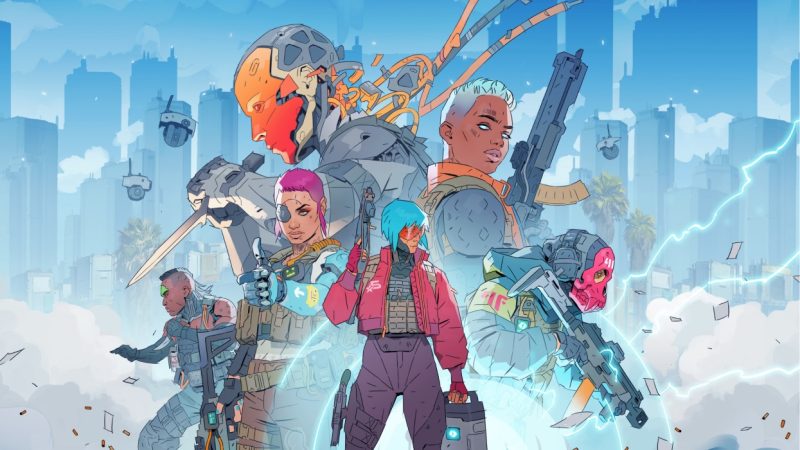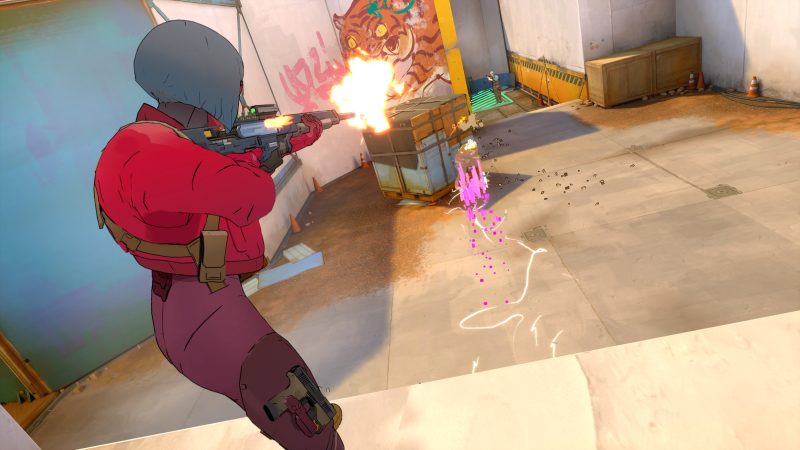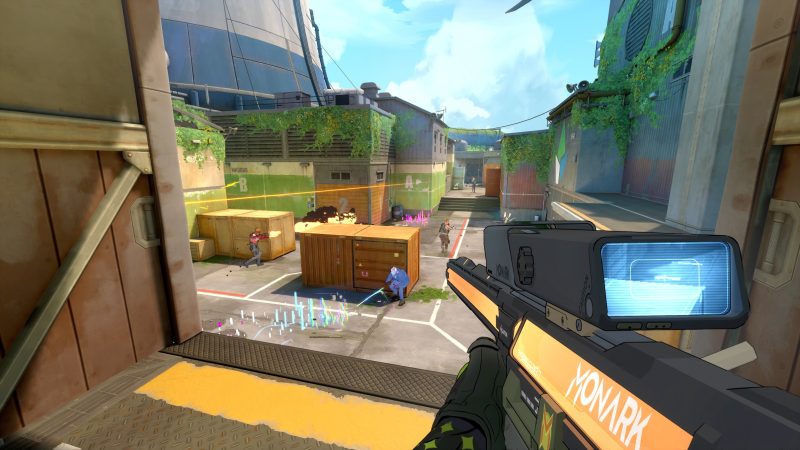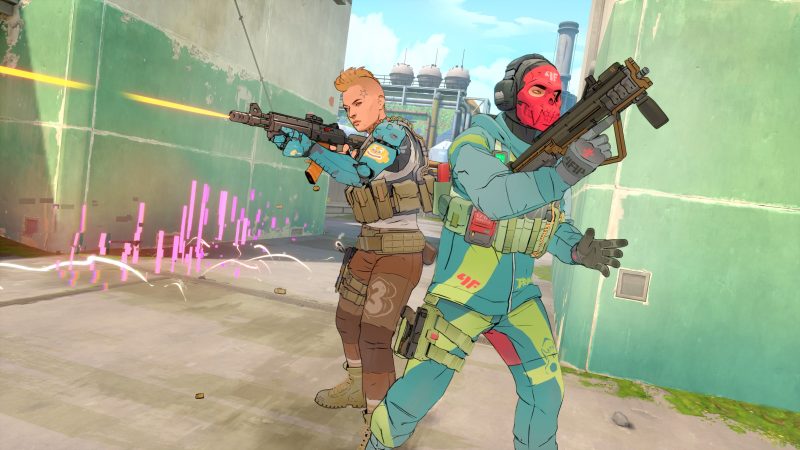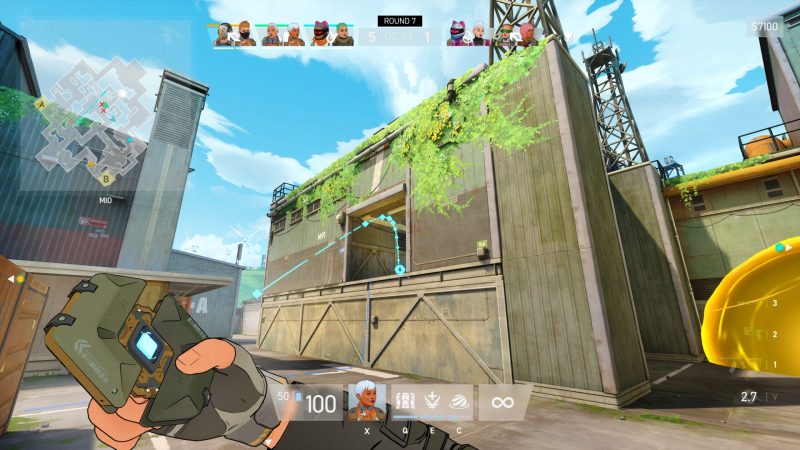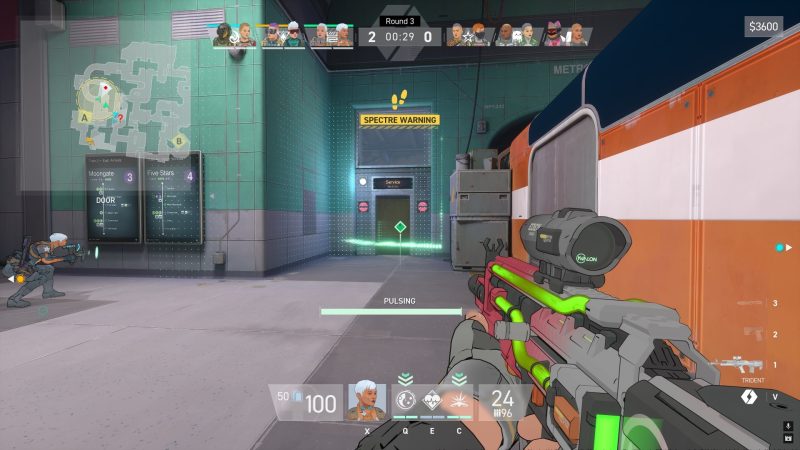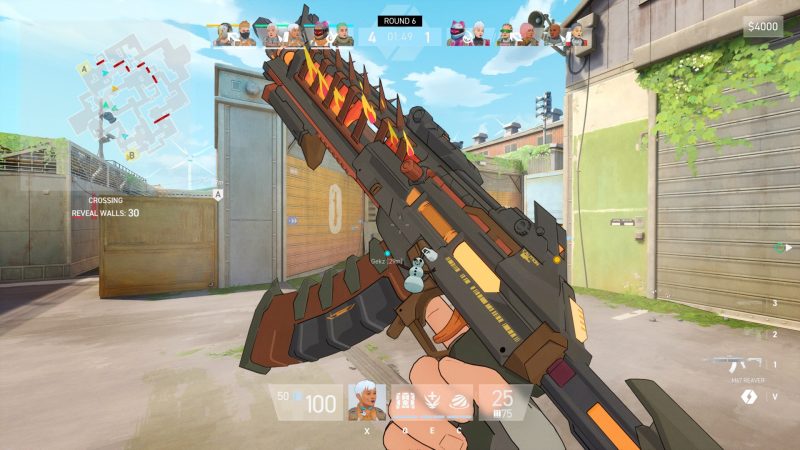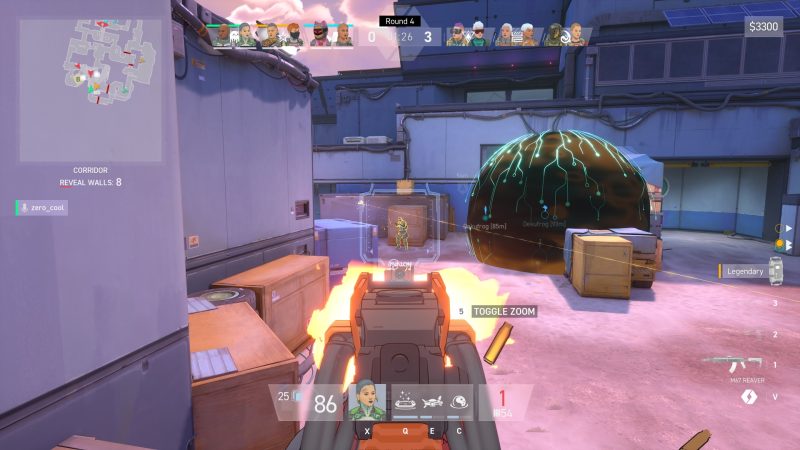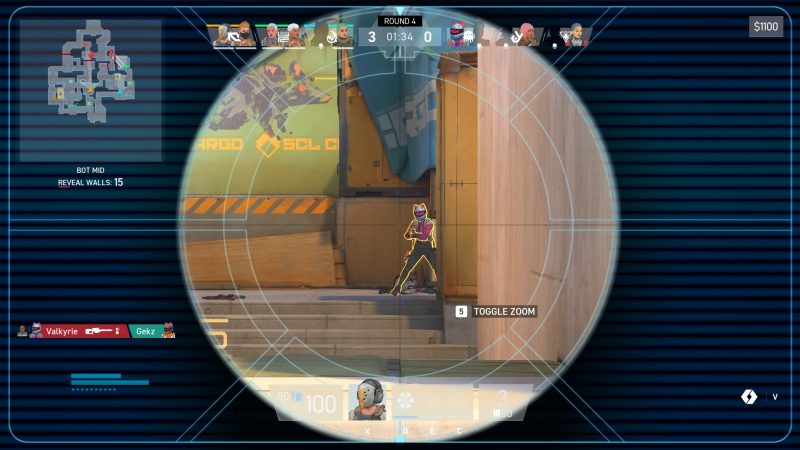Spectre: Divide Hands-On Preview – The newest FPS to try and break into the market has been revealed. From a team comprised of developers all hailing from major studios, many of them already FPS-focused with Mountaintop Studios comes their debut project, Spectre: Divide.
Spectre: Divide is a tactical shooter that anyone who has checked out games like Valorant or Counter-Strike will immediately feel right at home in, but it has a particularly strategic twist that shakes things up.
The game’s big mechanic is called Duality, where players have two bodies to jump back and forth between in matches. “One body, two minds,” as the tagline goes.
Beyond that there are other smaller areas of focus that set Spectre: Divide apart from its contemporaries, but making 3v3 matches feel and seemingly play like 6v6 is already huge in and of itself.
Myself and other members of the press got to spend some time with Spectre: Divide, learning about the game from the developers and then playing some matches with members from the team at Mountaintop who helped show me the ropes before I jumped in myself.
Can Spectre: Divide arrive in an already over-crowded scene of FPS games and make waves of its own? We’ll see about that – but it definitely has that potential.
Spectre: Divide Hands-On Preview – Spectres Die Twice
Making It Look Like The Concept Art
Mountaintop Studios made its public debut last August, in fact a full year ago today it put out a teaser for Spectre: Divide before any of us knew that’s what it was.
At the time, I remember thinking that while the environments looked good, they definitely looked like they might not actually look that good by the time the game launches.
Then in the next few days following that reveal, we got another little teaser, this time with concept art of characters and environments. I thought it looked pretty good, and wondered what the final version would look like, if that was the concept art.
But when I signed on to try Spectre: Divide for myself, I quickly realized that even though it might’ve been concept art at one point, that was already the final visual style for the game, and in fact it does look like the concept art.
Spectre: Divide’s game director Lee Horn even noted in a short briefing ahead of getting into matches that the teams goal was to make the game look like the concept art.
I was lucky enough to be paired with two developers from the art team, who described the challenge of implementing art that someone had drawn up on a piece of paper as a challenge for sure, but one that was met with consistent communication between teams.
The visual style of Spectre: Divide works as being bright, striking and all-around cool for a new tactical shooter. It also looks like its own thing, something you could recognize out of screenshots from other titles – something that can’t always be said for new live service titles.
One Mind + Two Bodies = More Time In-Game
Duality is the big twist to the tried-and-true tactical shooter gameplay fans of the genre are accustomed to. Needing to keep in mind that you have a second body to swap to does really give you a lot of opportunities for new strategies – if you can be quick enough about them.
You can cover yourself when placing/defusing the bomb by beginning the action and then swapping to your Spectre who will complete it while you cover yourself.
You can watch your own cross to get the jump on the enemy team, confuse an opponent so they don’t know where you’re coming from, perform quick rotations where you egg the team into thinking you’re heading to plant site A before swapping to plant site B.
When you’re not controlling your Spectre, it looks like you’re seeing a player who’s gone AFK, making them easy-pickings for your enemies. But you’ll be warned when someone on the enemy team is near your Spectre, and when its in danger, which means you can swap back to it and get the jump on an enemy who thought they had the jump on you.
Those are just some of the obvious options, but the more creative you get with it while communicating with your teammates, the more possibilities open up that really entice you to think about each round in a new way.
Most importantly though, if you die in a fight and your Spectre is still alive, you are still in the game. This is the thing I loved most about my time with Spectre: Divide.
Specifically as someone who doesn’t have a lot of experience with tactical shooters, having that extra life essentially gave me more chances to improve with each round.
More time spent in the game, improving and making plays made for a much better experience than the tension of one mistake being the difference between a surefire win or loss.
Plus being able to toss your Spectre seemingly anywhere by throwing the puck to call it from place to place anywhere in the map added more layers to the gameplay that I appreciated.
Finding The Right Combinations
Duality doesn’t just mean you have two copies of yourself running around the map. You select a weapons loadout with different weapons for each of the two bodies you control.
Spectre: Divide is also a bit of a hero shooter. There are no ‘ultimate’ abilities, but you will select different skill sets laid out across multiple factions or “Sponsors” as they’re called in-game, each bringing something new to the table to elevate your teams strategies.
Every member of your team has to choose a different set of abilities each match, which means that finding the right combinations between them can make a big difference – but not a bigger difference than the weapons you choose.
At least that’s what it felt like getting in my time with it so far. In the time I got to play it I only had access to a limited number of the ability loadouts available, so while I think the different abilities you have play an important role each match, everything more or less came down to the weapons loadout you choose for you and your Spectre.
And regarding those weapons, this is a point where I can see myself getting really into Spectre: Divide. Mountaintop is not shy about where their developers hail from, and with Respawn always being listed when they talk about the team’s previous work, I was glad to hear from the developers I was playing with that one of Spectre: Divide’s weapons designers previously designed weapons for Apex Legends.
It’s not that I felt a lot of familiarity between the weapons in Spectre: Divide and Apex – it’s that there was a certain quality bar, a feeling that I get when playing Apex that I felt with Spectre: Divide. For me, that translated to each weapon I tried feeling really good to use.
I also liked that one of Spectre: Divide’s main features is its huge emphasis on aiming down sight over hipfire. Each weapon has deterministic firing patterns when aiming down sight that you can master over time, which inherently isn’t anything groundbreaking.
But it’s another aspect of Spectre: Divide where I feel a kinship to Apex Legends, because I always found it a point of pride that after dedicating a lot of time with weapons I enjoyed using, I found a level of mastery with them. I can already pick out a few weapons from Spectre: Divide that I’d like to do the same with.
Will ‘Having Everything’ Be Enough?
Spectre: Divide is a game built by a bunch of veteran developers who are all, clearly, very talented and good at their jobs. When I step back and look at everything that makes up Spectre: Divide, I see a game that in many ways is the complete package.
Its Duality mechanic is the core creative element to the gameplay that helps emphasize creativity in strategy and doesn’t punish players for trying something and immediately dying. You get a second chance, you get more time actually playing and improving instead of feeling frustrated because one mistake had you sitting and waiting for the round to finish before you go again.
The weapons all feel great to use and I’m already a big fan of Mountaintop’s approach to gunplay. The maps I did get to play provide interesting vertical options and opportunities for creatively using Duality. The visual design is very impressive in how it is able to maintain the high-quality anime-inspired concept art all way through to what we actually get to play.
It has everything I’d expect to see in a top-tier shooter in 2024, yet I’m filled with this feeling of dread that it could still not be enough. The market for FPS games is so, so competitive, and even games that are able to execute at a higher quality bar than the big games that are already popular can still fail.
Mountaintop Studios may be comprised of a bunch of veteran developers, but they’re an independent studio publishing Spectre: Divide on their own. It’s a huge task to keep a live service game like this going and keep the quality of new content at the same high bar it seems to be launching with.
At least its free-to-play approach gives it the chance to grow with no financial barrier for players to check it out. I just hope it’s able to make the waves necessary for it to continue to grow and find its way to all platforms, with its own sustainable slice of the FPS market-pie carved out.
https://www.youtube.com/watch?v=01JX0mOjjKk